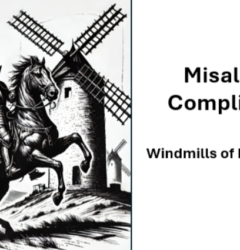Introduction
Effective IT audit planning is the cornerstone of a successful compliance journey, ensuring organizations can meet regulatory requirements and uphold their security and operational standards.
This IT audit planning guide introduces a structured audit planning framework that integrates the roles of Audit Managers, Auditors, and Auditees while breaking down the process into three distinct phases:
- Internal Audit Planning & Execution
- External Audit Execution & Controls Testing
- Observation Tracking & Closure.
With a focus on detailed task management, stakeholder collaboration, and metrics-driven progress tracking, this framework enables organizations to streamline their audit processes, address observations effectively, and prepare for future compliance cycles.
Whether you’re preparing for an internal review or onboarding external auditors, this blog offers a comprehensive roadmap to optimize your audit planning and execution.
IT Audit General Information
<To be Filled>
- Audit Name:
- Audit Type: (e.g., Internal, External, Certification)
- Scope of Audit:
- Start Date:
- End Date:
- Applicable Framework/Standard: (e.g., ISO 27001, SOC 2, GDPR)
IT Audit Stake Holders
Audit Managers : <To Be Filled >
Responsibilities
- Plan, organize, and oversee the audit process.
- Coordinate with stakeholders and ensure completion of tasks.
- Review and track observations for closure.
Auditors : <To Be Filled >
Responsibilities
- Perform control testing during external audits.
- Identify gaps or issues and provide observations.
- Work with Audit Managers to clarify requirements.
Auditees Role: <To Be Filled >
Responsibilities
- Provide evidence for controls.
- Collaborate with Audit Managers to address observations.
- Assist in implementing corrective actions.
Phases of the Audit with Metrics and Timelines
Phase 1: Internal Audit Planning & Execution
Objective: Identify controls, assign stakeholders, gather evidence, and conduct an internal review.
Steps:
- Identify Controls : Review applicable compliance frameworks/standards. Map controls to relevant teams (e.g., HR, IT, INFOSEC, Engineering).
- Identify Stakeholders: List stakeholders for each team and control. Assign roles and responsibilities.
- Evidence Collection Planning: Prepare a list of required evidence for each control. Assign evidence collection tasks to respective auditees.
- Audit Task Management: Create and assign tasks in the audit management tool. Define deadlines and progress tracking.
- Internal Audit Execution: Review all collected evidence. Verify completeness and relevance. Prepare a report with findings readiness.

Metrics:
- Percentage of controls mapped to stakeholders.
- Percentage of evidence collected against controls.
- Internal audit completion rate.
- Number of findings identified during internal audit.
Tentative Timeline:
- Duration: 2–4 weeks.
- Milestone: Internal audit tasks assigned by Week 1, evidence collection by Week 3, internal audit report by Week 4.
Phase 2: External Audit Execution
Objective: Enable external auditors to test controls, provide observations, and request additional evidence.
Steps:
- Onboard External Auditors: Provide access to the audit management tool. Share necessary information about the audit scope and controls.
- Control Testing by External Auditors: Auditors perform control testing. Record observations and request additional evidence if needed.
- Coordinate with Auditees: Audit Managers ensure auditees provide requested evidence promptly. Address clarifications raised by external auditors.
Metrics:
- Average time to provide requested evidence.
- Percentage of controls successfully tested by auditors.
- Number of observations raised by external auditors.
Tentative Timeline:
- Duration: 3–6 weeks.
- Milestone: External auditors onboarded by Week 1, control testing by Week 4, observation report shared by Week 6.
Phase 3: Observation Tracking and Closure
Objective: Address and close observations raised during the external audit to ensure readiness for the next audit cycle.
Steps:
- Observation Management: Track observations shared by external auditors. Categorize observations (e.g., Minor, Major, Critical).
- Collaborate with Stakeholders: Work with auditees and respective teams to address gaps Implement corrective actions and upload evidence of closure.
- Prepare for Next Audit: Conduct a post-audit review meeting. Document lessons learned and process improvements.

Metrics:
- Number of observations closed.
- Average time to close observations.
- Percentage of critical observations resolved.
Tentative Timeline:
- Duration: 4–8 weeks.
- Milestone: Observation categorization completed by Week 2, all critical observations closed by Week 6, readiness review by Week 8.
This enhanced template provides clear timelines, useful metrics to track progress, and a structured approach to planning and executing audits while ensuring continuous improvement across phases.
Seconize DeRisk Centre automates this entire process. Request a demo here.

















Recent Comments